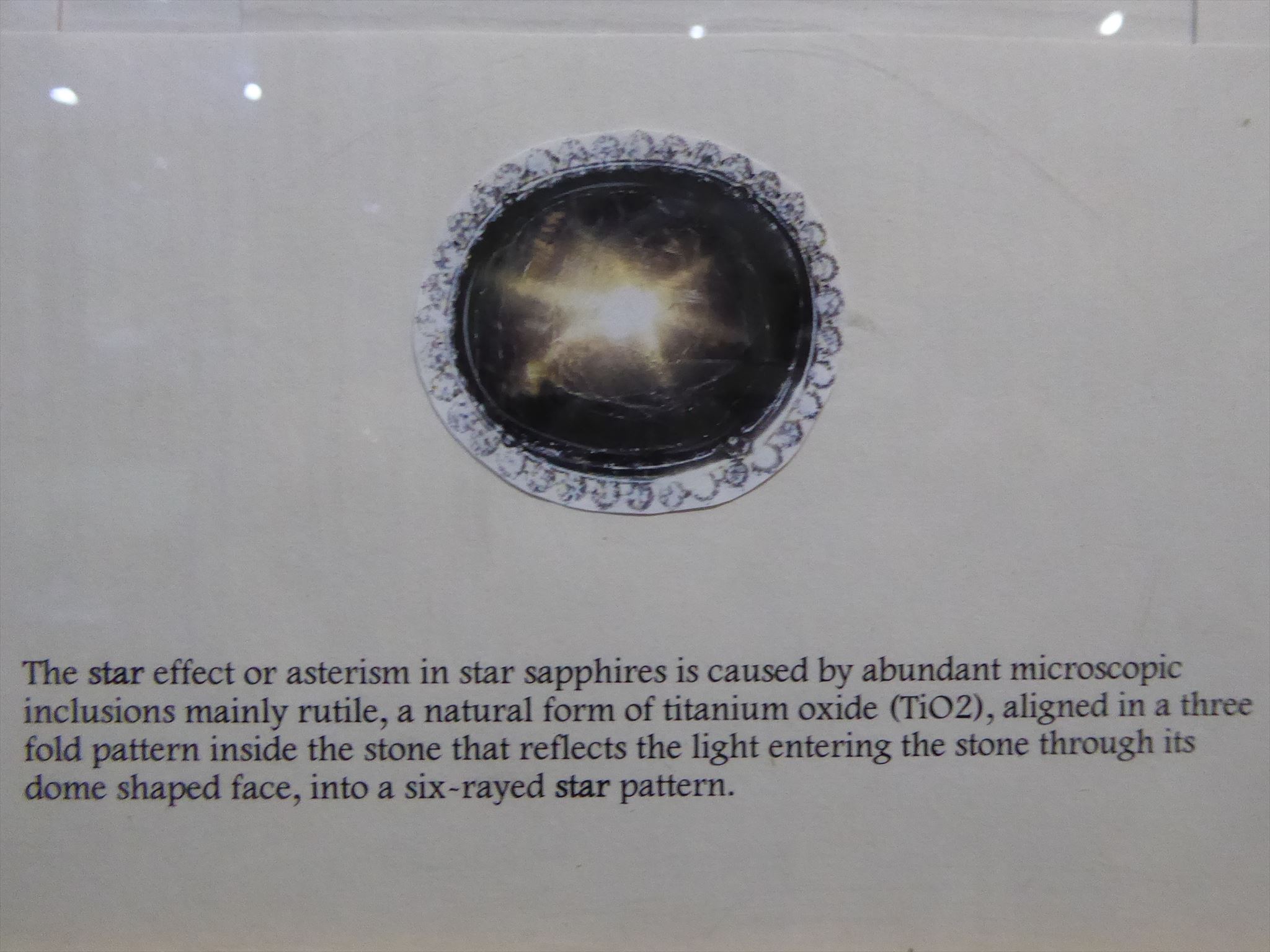| I have earned GSA's highest level: |
 |
Back in 1989, you could hardly turn on a radio without hearing Cher’s hit song If I could Turn Back Time. A couple of decades later, and it could be argued that with her various visits to the plastic surgeon, Cher is indeed attempting to turn back time. She has always been known for her unique, almost provocative fashion choices, but it’s difficult to think of Cher wearing something that used to be wedged under a door to keep it open… This is exactly what she did in the 1970’s, when she wore the Black Star of Queensland around her neck in a sketch on TV in 1971.

At S23 25.077 E147 41.917 Policemans Creek you will be close to where the Black Star of Queensland was found.
What is important here is that for most of the year, this creek doesn't carry any water. However during times of heavy rain the strength of the water flowing through the area carries stone from the source and deposits them here. OK, so the Black Star of Queensland’s door stopping days were well in the past by then. The "Black Star of Queensland" was found in Policeman's Creek in 1938 by the 12 year old Roy Spencer. The palm-sized stone weighed 1,156 carats and spent the next 9 years being used as a doorstop in the family home because his father said it was a worthless rock. In the 1930’s, its value wasn’t immediately obvious, and so due to its convenient shape and weight, it made an ideal doorstop. The Black Star of Queensland was eventually recognized for what is was, the largest star sapphire ever discovered and was cleaned up and sold.
On the basis of available evidence, the sapphire found in the central Queensland gem fields was derived from around the crust-mantle boundary from source rocks more felsic than a mafic benmoreite and possibly nepheline syenite in character. The main bulk of the sapphire was transported during the pyroclastic phase of eruptions between late Palaeocene to early Oligocene time. It is not known if sapphire accompanied the younger eruptions (Early Miocene) that delivered the high-uranium zircon as no primary deposits have been found containing both the brownish-red to red zircons and sapphires.
One important feature of the landscape is Policeman's Knob in Rubyvale. It is the oldest known basalt plug in the world at 56 Million years old . More than 70 plug intrusions occur within an area approximately 50 km in diameter near to the present exposed eastern margin of the Drummond Basin. Some of the plugs form sharp hills and mountains while others are just low rises. You can see Policeman's Knob very clearly from around the area and there are tracks off Goanna Flat Road that can be walked to get to the top - its' a great view.
This is not a mineral you often hear about, but it is the second hardest natural mineral known to man. Aluminum Oxide, as it is known in mineralogy circles, is formed by both volcanic processes deep in the earth and the high pressure and temperature, conditions of metamorphic processes. As liquid magma deep within the earth slowly cools the minerals dissolved within cool into crystals. The purest and most translucent forms of corundum are created by recrystallization of minerals during the metamorphosis of rocks that are of igneous origin. It is a process that takes millions of years and only a few places in the world have rock outcrops where these rare crystals are exposed by weathering.
The pure form of the mineral corundum is clear and colorless, but mineral 'impurities' that seep into the Aluminum Oxide as the rock cools give it its fabulous colors. The distinctive colors of many gemstones are caused by the presence of transition metals as impurities in an otherwise transparent crystal lattice. This is a called crystal-field or, a ligand-field effect. Corundum comes in many different colors, all of which are highly prized if they are free of intrusions and translucent or transparent. When trace amounts of titanium and iron get into the Aluminum Oxide crystal lattice during its formation a beautiful blue sapphire is formed.
The early shaft mining of sapphire at the Divide and Bedford's Hill may have worked primary volcanic deposits. Such pyroclastic deposits were being worked for sapphire during the early to middle 1970's in gravel beds on the surface and at depths of 15 to 20 m on Bedford's Hill, at the Divide and adjacent to Sheep Station Creek at Reward. At Bedford's Hill, pyroclastics 1 to 4 m thick overlie granite and are overlain by fluviatile sediments derived partially from the pyroclastics but mainly from the Retreat Granite and the Anakie Metamorphics. Gravelly lenses up to 1.5 m thick and containing sapphire are dispersed throughout the fluviatile sediments. The sapphire and zircon bearing pyroclastics on Bedford's Hill contain both air fall and surge deposits preserved in depressions in the granitic terrain.
Q1. How hard are Saphires?
Q2. What is special about Policeman's Knob?
Q3. There is one colour of Saphire that is given a different name. What is it?
Q4. How were the Saphires brought to the surface and when?
Q5. In what type of landform location are the Saphires found around Rubyvale.
You may post a found log but are required to message your answers. If the answers are not received in an acceptable time frame, the log will be deleted.
Feel free to fosic and post photos of your finds with your log.